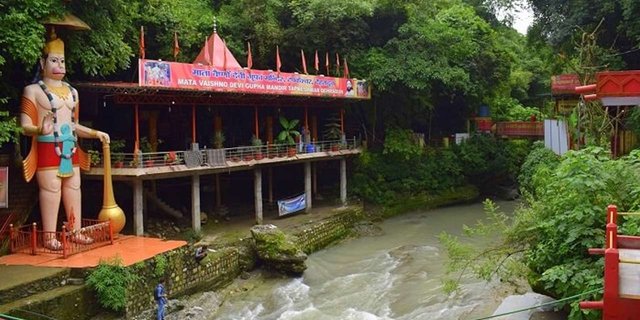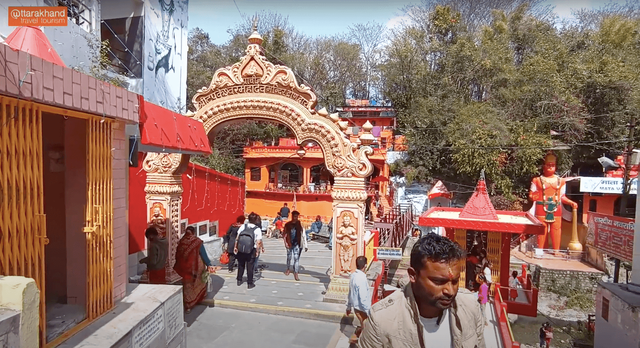Nestled in the pristine lap of the Himalayan foothills, Dehradun is not only known for its breathtaking landscapes but also for its spiritual significance. The city is home to numerous temples that serve as sanctuaries for both devotees and nature enthusiasts. Among these, the Tapkeshwar Temple stands out as a remarkable shrine that combines the essence of spirituality with the beauty of nature. This article explores the rich history, religious significance, architectural marvel, and the serene ambiance of Tapkeshwar Temple, making it one of the best places to visit in Dehradun.

Historical Background
The history of the Tapkeshwar Temple is intertwined with ancient legends and the myths that have been passed down through generations. The temple is dedicated to Lord Shiva, one of the principal deities in the Hindu pantheon. According to local folklore, the name "Tapkeshwar" is derived from the Sanskrit words "Tapp" and "Kesha," which mean "water" and "hair," respectively. It is believed that Lord Shiva once resided in the cave near the temple and allowed the waters of the Asan River to flow through his matted locks, purifying the water and blessing the land.
The temple's history dates back to the Mahabharata era, making it an ancient site of worship. It is said that the Pandavas, the central characters in the epic, sought the blessings of Lord Shiva at this very location during their exile. Over the centuries, the temple has witnessed multiple renovations and improvements, yet it has retained its spiritual aura and historical charm.
Religious Significance
Lord Shiva and the Tapkeshwar Temple
Lord Shiva, the presiding deity of the Tapkeshwar Temple, is regarded as the Supreme God in Hinduism. He is often depicted as the Lord of Destruction but is also associated with creation and transformation. The temple serves as a sacred abode where devotees come to seek Lord Shiva's blessings and experience spiritual enlightenment.
The Lingam, a symbolic representation of Lord Shiva, is the focal point of the temple. It is believed that the Lingam emerged naturally from the cave, enhancing its spiritual sanctity. Devotees offer prayers, milk, water, and other offerings to the Lingam as a sign of their devotion.
The Mahashivratri Festival

One of the most significant festivals celebrated at the Tapkeshwar Temple is Mahashivratri. This festival, dedicated to Lord Shiva, is observed with great fervor and devotion. Devotees from different parts of the country visit the temple during this auspicious time. The temple premises come alive with the sound of bells, conch shells, and the fragrance of incense.
During Mahashivratri, a grand procession of Lord Shiva is carried out through the streets of Dehradun, attracting a massive gathering of pilgrims and tourists. The temple complex is adorned with colorful decorations, and special pujas (prayers) are performed to honor the deity.
Architectural Marvel
The architecture of the Tapkeshwar Temple is a blend of simplicity and spirituality. It does not boast grandeur but exudes an aura of purity and divinity. The temple is located inside a natural cave, which is in itself an architectural wonder.
Cave Temple
The temple is situated within a cavern that was naturally formed over time. The cave is dark and mysterious, and it is said to be where Lord Shiva meditated. Devotees enter the cave to offer their prayers and witness the divine aura of the Lingam. The sound of the water droplets dripping from the cave's ceiling adds to the mystique of the place.
Natural Beauty
The Tapkeshwar Temple is surrounded by lush greenery and offers a breathtaking view of the Garhwal hills. The natural surroundings enhance the temple's appeal and create a tranquil atmosphere that is conducive to meditation and reflection. The temple is an example of how spirituality and nature can coexist harmoniously.
Temple Complex
Apart from the cave shrine, the temple complex also houses various smaller shrines dedicated to different deities, including Lord Rama and Lord Hanuman. These shrines are beautifully adorned with idols and offer additional places for devotees to pay their respects.
Serene Ambiance
One of the most remarkable aspects of the Tapkeshwar Temple is the serene ambiance it provides. The temple's location, within a cave, adds an element of seclusion and tranquility. The constant dripping of water from the cave's ceiling, coupled with the incense and the soft chants of prayers, creates an atmosphere of spiritual serenity.
The temple's surroundings are equally enchanting. The lush green forests, the chirping of birds, and the soothing sound of the Asan River contribute to the overall sense of peace and tranquility. It is a place where one can connect with both nature and spirituality, making it an ideal spot for meditation and introspection.
Visitor Experience
Pilgrims and Devotees
The Tapkeshwar Temple attracts a steady stream of pilgrims and devotees throughout the year. Many come to seek blessings, while others embark on a spiritual journey to connect with Lord Shiva in this sacred place. The atmosphere is charged with devotion and reverence, making it a deeply enriching experience for those who visit.
Nature Enthusiasts
The temple also draws nature enthusiasts and tourists who are captivated by its unique setting. The scenic beauty of the temple and its surroundings makes it an ideal destination for those looking to escape the hustle and bustle of city life. Hiking and exploring the nearby areas add to the adventurous spirit of the visit.
Meditators and Yogis
The peaceful ambiance and natural surroundings make the Tapkeshwar Temple an ideal place for meditation and yoga. Many seekers and practitioners find solace in the cave and the tranquil surroundings, using them as a backdrop for their spiritual and self-discovery journeys.
Conservation Efforts
Preserving the natural beauty of the Tapkeshwar Temple is essential to maintaining its charm and sanctity. The government and local authorities, along with several environmental and heritage preservation organizations, have taken initiatives to ensure the temple's surroundings remain pristine.
Efforts include reforestation, the protection of water sources, and the management of waste to prevent pollution. The temple management, in collaboration with these organizations, has also implemented eco-friendly practices to maintain the temple's sanctity while minimizing its impact on the environment.
Conclusion
The Tapkeshwar Temple in Dehradun is a place of spiritual significance and natural beauty, truly earning its place as a popular temple of Uttarakhand. Its historical roots, religious significance, and unique architectural setting make it a compelling destination for pilgrims, devotees, and nature enthusiasts alike. The temple offers a serene ambiance that fosters a sense of inner peace and tranquility, making it a must-visit destination for anyone exploring the spiritual and natural wonders of the Himalayan region. The interplay of spirituality and nature at the Tapkeshwar Temple is a testament to the enduring charm of this sacred site.